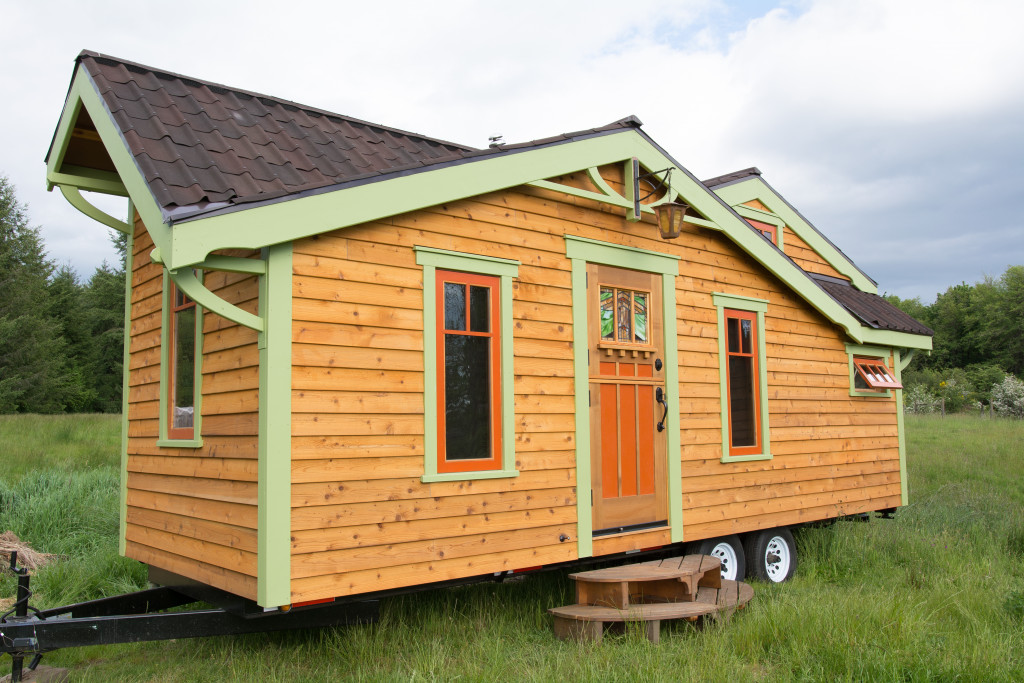The concept of tiny home living is simple. You have a 300-square-foot house (sometimes less than that). You keep only as few essential things as possible with you. The bed is a convertible desk while the sink doubles as a washing machine or vice-versa. Tiny home living is not for everyone, though. It might fit a single person who lives a nomadic lifestyle, but can you start a family with this lifestyle? Is it right to “force” your partner and kids to live the trappings of a convenient city or suburban life and live in a tiny home?
You can look at this in two ways: one, tiny home living is cheap and more practical. Since the 1950s, the average size of a home more than doubled. And while there are people who espouse the benefits of tiny home living, one cannot deny the benefits of living in a bigger home where your kids can have rooms of their own.
Second, life is more than about the size of your home. Your kids will grow happily in a nice suburban home with a large backyard, but they’ll equally be happy in a smaller home where they share a lawn with the rest of the families in a tiny house community. The concept of spending time with their friends outdoors is more welcome to kids than living in a secluded home with only their siblings to play with.
What About the Pandemic?
But then, the pandemic happened. Suddenly, that tiny land that is for sale and you have been eyeing for your proposed tiny home is no longer feasible. How can you quarantine inside a 300-square-foot home? Wouldn’t that be suffocating for you and the kids? How will your kids grow healthily if they are imprisoned inside a home that doesn’t have space for them to move around?
The pandemic might have been extra hard for people in the tiny home living community. After all, if you are not allowed to go out of the house because of lockdown measures, that means you will only get to see the four small corners of your tiny home. Sure, that’s okay if you’re single and can just binge on Netflix. But what if you have a toddler or two babies with you? How would the quarantine restrictions feel like for them?
Reconnecting with Nature

The truth is that tiny home living is such a wonderful experience for young kinds. The great outdoors is going to be their second home. They are going to spend time with nature instead of watching TV or learning video games. It’s a sad fact of life that kids nowadays no longer play outside or mingle with the neighbors. Their worlds are smaller compared to the generation that precedes them. It’s all because everything they could ever want and need is in their homes. Tiny home living eliminates that convenience.
Privacy Issue
However, the problem with tiny home living is when the kids grow up. Privacy and boundary issues will crop up when the kids are all grown up and need their own rooms. They would want to spend time alone either reading books or chatting with their friends. A dedicated space solely for them is one of the most important components of a home. It is so critical to their development and health that child development experts suggest that kids of opposite sexes cannot share a room once they hit puberty.
Plus, it builds a sense of responsibility. They should learn how to clean their own bedrooms, fix their beds, personalize their walls, and even fold their own laundry. They will carry these lessons with them when they go to college and when they join the workforce.
How do social workers feel about tiny homes with children? In many instances, a tiny house will be seen as uninhabitable. For social workers, children should not live in such a cramped space because it does not give them the space and privacy they need. But these notions should be challenged especially because a tiny home is a practical solution for those who cannot afford a bigger space.
The concept of tiny home living is still young. Although a lot of people have been practicing minimalism for years, actually living in a house that will only fit your bed is a different matter. Is it going to be sustainable? Maybe. How about if you have kids? You may have to reconsider your options. What’s for sure is that tiny home living is not for everyone, so you always have to consider your current needs.




